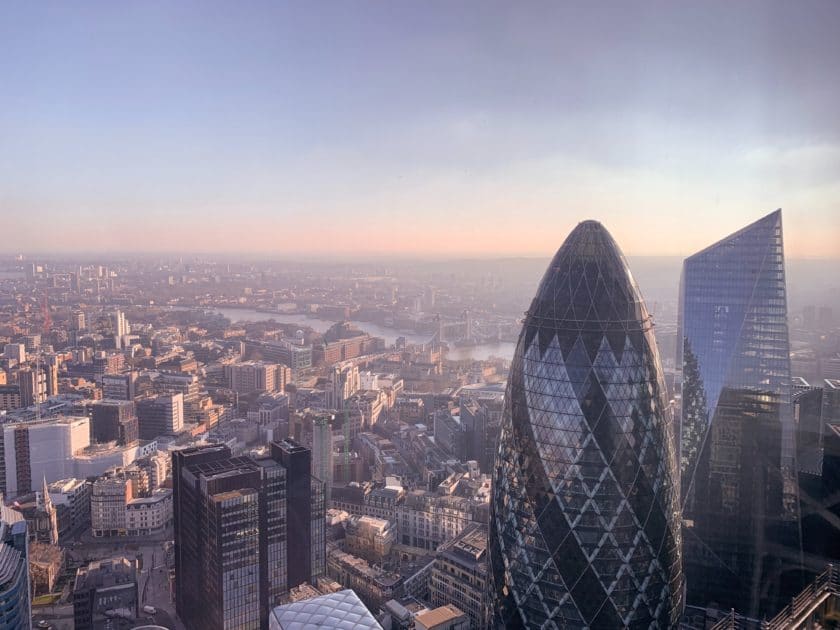Simon Murphy, manager of the VT Tyndall Unconstrained UK Income fund, shares his insights into the fund’s emphasis on mid-cap investments, citing attractive valuations resulting from years of negative sentiment.
He also discusses the challenges faced during his takeover of the fund just before the global meltdown of February 2020 and concludes with reflections on the UK market, addressing perceptions versus reality as well as potential catalysts for positive market movement.
Why you should listen to the interview
It is worth noting that, despite the recent challenges for the UK market, Simon Murphy, a self-confessed mid-cap enthusiast, is a determined believer in the opportunities available to investors today. Find out why by listening to the full interview.
This interview was recorded on 20 February 2024. Please note, answers are edited and condensed for clarity. To gain a fuller understanding and clearer context, tune in to the full episode of the ‘Investing on the go’ podcast – see below.
What to look out for in this interview
How perception has created a “once in a generation opportunity”
“The mid-cap market in the UK is the primary focus of the portfolio. And by primary, I mean typically around about 75% of the fund. This is partly because it’s an area I’ve always invested in and enjoyed investing in, but more importantly, it’s because we think we can find some fantastic, really interesting businesses in that part of the market: very diverse in terms of sectors, geographic exposures, and different stages in development of the business in terms of maturity and so forth.
“But, I think – and I choose these words very carefully – I think we’ve got a generational opportunity in the UK today, in particular in mid-cap, and probably also in the small-cap area of the market as well, in terms of valuation. We’ve been out of favour for many years post the Brexit vote, We’ve had huge outflows from retail funds, institutional investors and overseas investors are all record underweight and all of that negativity has, I think, created a wonderful valuation opportunity, literally a once in a generation opportunity. And a lot of that negativity, I genuinely believe is perception versus reality and that’s what’s creating the opportunity.”
Case study for WHSmith
“Most people obviously think of WHSmith as a high street business, but actually, it’s really a travel retail business. 85% of WHSmith’s profits now come from travel retail, so predominantly from airports, but also rail and so forth. And this business obviously had a torrid, torrid time through Covid when travel was shut down and so forth, but the company has continued throughout this period, investing in new stores, not just in the UK but more globally, particularly in American airports. They’ve now got this huge pipeline of redevelopment opportunities that will play out over the next four or five years, and will see this business grow very, very strongly – both from the expansion of the store estate, but also from continuing recovery in travel.
“It’s now valued on about 13 times earnings. Historically, it’s been valued on sort of 18 times plus. The dividend is going to grow quite quickly over the next few years. It’s run by a really, really strong management team and it just looks an outstanding opportunity for the next few years. I’m not necessarily making a call on whether it’ll outperform in the next week or the next month, but as I see the development of the business over the next few years, it just looks a wonderful investment opportunity.”
What did I learn from 2020? Trust the process
“I started running the fund on the 1st of February, 2020, just as the markets were about to meltdown. The market fell, particularly the mid-cap market fell very, very sharply and in such a short period of time; as an index, the mid-caps were down about 35% within six weeks, which was unheard of. And it was at that point that I made a conscious decision. Obviously, I didn’t know anything about the pandemic, I wasn’t making a call on when we would discover vaccines or anything like that. I just took a view that there were many, many franchises that were fundamentally strong, fundamentally robust, that would grow and thrive into the future, run by really good people, where their share prices in a very short space of time were down 40%, 50%, sometimes 60% plus. And so I made a conscious decision to basically just start buying, with a view to making hopefully some very, very good returns for clients over the medium term, and not taking any view on the very short term.
“The biggest single thing I learned through that process was that focus on the medium-term time horizon is so important; not trying to get too wound up about what’s happening on a daily or weekly or monthly basis, not trying to predict what the so-called catalyst might be for performance but to just recognise when an investment opportunity is there and not get too worried about when it subsequently gets realised and reflected in the shared price.
“I was lucky to be supported by Tyndall and Alex Odd, our CEO, who absolutely backed me to continue doing that in what was a crazy volatile market. I just kept buying and buying. And in a very short term, it obviously was difficult and the fund continued to underperform because these companies kept going down on a daily basis, but very, very rapidly thereafter, we saw a good, strong recovery. And although the last 4 years have been challenging, the key message for me — and I can’t stress this enough — is to have that medium-term time horizon as a focus. It’s a really easy thing to say, but in practice, it’s a really difficult thing to do.”
Diversification as a defensive benefit for dividends
“When I talk about the mid-cap market generally, people typically understand the potential for capital growth because mid-caps tend to grow more quickly than larger companies and so forth. But most people are often quite dismissive about the income capability of mid-caps and I think that’s a real red herring.
“So, although we had to cut our distribution through 2020 and into 2021 – that was painful for us, obviously no one likes doing that – but the distribution cut on our fund for the year to March 2021, was 20%. Whereas for the whole UK stock market in that year, dividends were cut by 41%, so we managed to hold our cut to less than half of the overall market. And I passionately believe that’s because that mid-cap focus meant we were much more diversified in our sources of income so we weren’t overly reliant on the banks. That diversification, I thought, added a real defensive benefit to us in an unbelievably difficult time for dividends.
“And then for the last couple of years, as dividends have recovered really quickly in the market, our distribution on our fund has more than kept up with the recovery as well. So, I think that’s a real advert for just actually how valuable mid-cap dividends can be.”
Conclusion
You’ll be hard pressed to find a manager more passionate about the UK mid-cap market than Simon. His passion and expertise is not only evident in this interview but the VT Tyndall Unconstrained UK Income fund was top of the UK income sector in 2023 further supporting his experience in this area of the market.































